Sowing calendar for a year needed every gardener and gardener. The data specified in it helps to clearly determine when it is best to plant seedlings, sow seeds, collect harvest, make blanks. Depending on the position of the Moon with respect to the Sun, the biochemistry of all living beings on our planet, including plants, is changing. In this article you will learn how to use the Moon Sowing Calendar of the Gardener to always receive a consistently rich harvest.
Moon phases
Every day, the moon changes his outlines, in which you can make sure looking at the sky in the evening. But this is not only an interesting astronomical fact, but also a platform on which a special calendar has once been developed. It cannot be said that someone took and invented the modern version of the lunar sowing calendar. Knowledge of the influence of the moon on the vegetation world was accumulated by centuries and over time were systematized in a special table.
Before switching to the direct description of the sowing calendar table, it would be nice to explain how to use them, and that lies for such incomprehensible expressions as the "Rising Moon in Fish" or "an aging moon in Capricorn", for example. So, when the moon is "born", and the sharp ends of the month in the sky are directed to the left side, this is called the ascending Moon. This period of the ancestors was called "yields". The ascending moon "captures" certain constellations of the zodiacal circle, which in turn also have a serious effect on the plants, but this later. When it is located in Saglithus, Aquarius, Capricorn, Aries, Taurus or Fishes, vegetable juices come to an active movement, the ground part of the plants begins to develop. During this period, it is good to plant seedlings, and fruits and vegetables will be particularly juicy.
On the descending Moon, on the contrary, all the energy goes into the underground part of the plants, so roots and tubers are actively developing. Shed or transplanting plants at this time is extremely recommended. Any agrotechnical manipulations such as weeding, trimming, spraying is best carried out when the moon entered 2 and 4 phase. Ideally choose the dry and fruitless signs of the zodiac, for example, Leo, Aries, Gemini, Sagittarius. The aging moon is also well suited for harvesting root and harvesting to storage.
The time period of the growing moon begins to the new moon and ends with a full moon. At this time, the vital energy of plants is concentrated in the ground part, so if you put a seed, it will get a "program" to grow up and intensively develop an overhead part. It follows from this that it is necessary to plant fruit plants on a growing moon so that they give the crop faster. If you trim, you can arouse sleeping kidneys, but you need to act very carefully, otherwise the plant can simply expire to juice and die. There should be no ochelation. Although the growing moon of the roots for the most part "sleep" and weakly respond to any damage, their vitality is also weakened. During this period, already there is something to do: landing and transplanting fruit crops, all sorts of land, fertilizer, vaccination.
Useful advice: on a growing moon plants need more water to maintain active growth.
Full moon lasts 3 days, and at this time, experienced gardeners are recommended to cut forward shoots, giving out the beds, destroy pests, dip and mulch the soil. Also, this is a favorable time to collect seeds (with the exception of the "water" signs of the zodiac) and make blanks (homemade wine, pickles, but not heat-treated canned food). With trimming bushes and trees, it is better to post the same way as with a piece of vegetable plants and vaccine.
After the full moon, the moon begins to "grow old", and it continues to the new moon. At this time, as you already know, the vital energy of the plants is directed to the underground part of them, and since in nature the roots are less resistant to damage than the ground part, even a minor damage to a decreasing moon may entail the death of the plant. If you put seeds during this period, they will receive a "program" to develop underground, and the ground part will be underdeveloped. It is logical that under such conditions it is better to plant all sorts of roots: potatoes, carrots, radishes, parsley on the root, horseradish, etc. Bob cultures are also well developed. When the moon decreases, you can destroy weeds and pests, crop plants to slow down the growth of shoots, dig out floral bulbs and storage tubers. This is a good time to cut flowers for long-term transportation and storage. Various billets (dried fruits, heat-treated canned and jam) are obtained very tasty and are stored for a long time. Intense watering during this period is not required, but you can make root organic feeding.
The new moon also lasts three days: Eve, the new moon itself and the day after it. Any experienced gardener knows that at this time it is better not to plant anything at all and not sow. Also extremely undesirable to make vaccinations and loose land in order to accidentally not injure the roots. On the eve of the New Moon and the day after you can destroy pests and weeds, cut sick and dry branches and shoots, remove wild boosters and pinch vegetables. However, the new moon should not be touched by cultural plants, since their life forces are low. It is better to limit ourselves to watering and light loosening after it.
Useful advice: This is how it is very easy to distinguish the growing moon from decreasing: if a month is reminded by the letter "C", then the moon agitates (the word "olde" also begins on "C"). When it forms the letter "P", if we substitute a vertical line to it, then the moon grows (the word "grows" also begins with "P"). Another hint - the growing month is best visible in the evening, and decorating - in the morning.
Zodiac signs
In addition to the phases of the moon on the vital energy of plants also affect the signs of the zodiac circle. In this part of the article, we will provide recommendations for gardeners and gardeners who want to get rich harvests and keep them safe as much as possible.
The impact of the signs of the zodiac on the plants:
- Aries - a blister and dry sign. At this time, you can sow plant seeds that you do not plan to store, but immediately use it in the food. These include different greens (spinach, salad), radishes, tomatoes and bush beans. This is a good period for collecting rootfodes, cutting flowers and fruits. You can spray plants from pests, to carry out cultivation, pour, however, it is better to refrain from transplantation and landing.
- Taurus - wet and fertile sign. Plants planted under the moon in the Taurus, do not spare for a long time, but when it happens, "we are punctured" everything immediately, they differ in a strong root system and give a good harvest. They are not terrible temperature differences and harsh winters, but you will not get good seeds from such instances. At this time, it is better to engage in crops, planting and transplanting any crops, make vaccination and trimming to strengthen the growth of shoots, cut the trees and bushes. On the Moon in the Taurus, any seedlings quickly take root, therefore it is the perfect time for prejudging landings. The harvest assembled during this period is stored for a very long time.
- Gemini - dry, smaller sign. It is undesirable to plant and transplant fruit and vegetable cultures under it, but you can engage in roses, shrubs and any curly plants. This is a good time to collect and harvesting medicinal herbs. If you crush the grass in the twins, it will slowly grow up, so you can safely cut the lawn and remove weeds and unnecessary shoots. The optimal period for harvesting grain, berries, root crops and crop drying.
- Cancer - wet, fertile sign suitable for watering, feeding and making fertilizers in the soil. Seeds sitting under this sign will spit slowly, but their root system, on the contrary, will grow very actively. Plants will give a plentiful harvest, but weak branches can break under the weight of fruits, so it is best to plant low-spirited crops on a growing moon under cancer. Another point - such plants will have a tendency to lie, so if you like grapes, raspberries or blackberries, not to find better. The fruits are better to immediately eat in food or make the workpiece from them, because due to the high juice they will not be able to be stored for a long time. Since cultures that have grown under cancer cannot give high-quality seeds, it is better to choose annual varieties.
- The lion is a dry blistering sign suitable for weeding and digging roots. At this time, it is good to plant perennial shrubs, remove the crop of legumes and grain. From transplanting and crops it is better to refrain.
- Virgo is a wet, but a low-product sign that affects the development of the root system. At this time, you can plant low-spirited trees and decorative shrubs, get rid of weeds, dive and transplant cultures planted under cancer, scorpion or fish. Plants planted during this period are little susceptible to diseases, possess good vitality and quickly restored in case of damage. But the seeds are better not to sow, with the exception of annual flower crops.
- Scales - wet, fertile sign, guiding all life energy into a flower. Plants give a rich harvest that is stored for a long time, possess a strong root system, quickly coming up after transplantation, give high-quality seeds. At this time, you can sow, plant and transplant vegetables, berry and fruit trees, vaccinate and cut shrubs. This sign is especially favorable for all tuber cultures, bulbous colors (on a decreasing moon), as well as podlock and sunflower (on the growing moon). A good period for the training of tubers and seeds to storage.
- Scorpio - wet, fertile sign, guiding life juices in the leaves. The second on productivity after cancer. This means that the crops are distinguished by the rapidity, the plants grow strong and high with a well-developed root system. A favorable time to replant, sow and plant spicy and medicinal plants, vegetables, berries and any other plants intended for long-term storage. Under scorpion, high-quality seeds are obtained, delicious canned fruits and vegetables. However, if you collect potatoes at this time, it will be watery and the taste will deteriorate from long storage. This is not the best period for breeding the root division, collection of herbs, digging the bulbs of colors and planting trees.
- Sagittarius is a dry and low-productive sign that guides energy fractures. At this time, you can sow onions and herbs, garlic, potatoes, peppers and radishes. Suitable for harvesting root and fruit.
- Capricorn is a dry, a fertile sign that promotes the development of the root system. This is a good time for sowing, landing and transplanting any flower and vegetable crops. By influence on plants, Capricorn is very reminiscent of the Taurus - the shoots are "crying" late, but everything is immediately developing into strong healthy plants. Capricorn is recommended to plant plants before wintering in the soil. Trees and shrubs, "born" under this sign, longer and more abundant fruit, although they give the fruits of medium sizes. Seeds are high quality and can be stored longer than usual.
- Aquarius is a dry, non-fermented sign that gives energy flowers. At this time, it is extremely recommended to sow something, plant or replant, because the seeds or not sprout, or the plants will be sick and died. If you put a tree under aquiet, it will grow curves and never give a rich harvest. During this period, attention to spraying, pinching, picking, weeding, pest control.
- Fish - wet and fertile sign, guiding life juices in leaves. By its impact, cancer resembles - plants develop quickly, you can, give a rich harvest of juicy fruits, but it will not work for a long time. For this reason, under the fish, it is better to sow grass and vegetables that you immediately use either food or sell. This is a good time to transplant on the growing moon. It is not recommended to plant plants that will be winter in the open ground, as they will be unsuitable for harsh weather conditions. Also do not transplant the plants planted under scorpion, bulbous and tuberukovichny cultures (can bend root system). And, in general, temporarily do not touch the tubers and roots. At this time, it is possible to engage in sowing and disembarking seedlings of annual colors, vegetables, billets of cuttings for vaccination, trimming bushes and trees, making fertilizers. Under the fish it turns out the most delicious wine and fruit juices.
Sowing calendar for 2018
Now that you know how to use the knowledge about the pheasis of the Moon and the signs of the zodiac for growing plants, you can paint the sowing calendar of Gardener for future 2018 in detail. And even though he is still far ahead, you can now plan landing for those or other cultures and prepare place for them.
GENERAL INFORMATION Sowing calendar 2018:
- February - In February, the preparation of seedlings and seeds to germination begins. This month, it is necessary to protect perennial plants from frosts, pulling the snow around them and shaking it with branches. In the first half of the month, seeds of tomatoes for seedlings in greenhouses and open soil can be seized. At the end of the month there comes a queue of pepper seeds, celery, but provided that there is additional artificial lighting.
- March - This month there is an active melting of snow, therefore it is necessary to clean the channels on flat and lowered areas, and the tubercles and hills are covered with branches or foliage to protect against rain and sunlight. To keep moisture and nitrogen in the soil, make fertilizers and reap part. The secret of experienced gardeners: to get a crop of perennial crops for 2-3 weeks ahead of time, crush the ash or peat on the inconsistent snow and cover the film. When warming up, you can begin to trim and form the crowns of fruit trees, sow onions on the feather and endure the potatoes in the sun.
- April - the table of the sowing calendar for April is already more dense, since active work began on the preparation of land to sow. In the middle of the month, it is possible to sow dill, salad and other greens, carrots, radishes, peas, onions on the river. Please note that if you sew onions on the rope and parsley to the root, for example, do it on a decreasing moon to develop the root. So that the greens is always on the table, sow it every 7-10 days. At the end of the month there comes a place to plant seedlings of cabbage, but it needs to be covered with frost films.
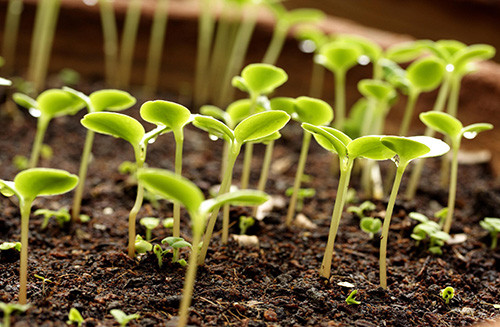
- May is the time of the main sowing work. It is necessary to process the soil once again, after which you can hang onions, carrots, greens, polka dots, radishes, strawberries. Tomatoes and cucumbers are planted in the greenhouses. When frosts disappear, they can be planted into open soil with eggplants, zucchini and beans. Until May 5, early potatoes are planting, after - late. In general, with the landing of all the roots it is better to end in the first numbers of the month. At the same time, the first pests are "wake up", so do not forget to pay due attention to the procedures to combat them. The upper layer of the Earth must be as dry as possible, so constantly mulch the soil, otherwise the pests will postpone the eggs in it.
- June is the end of the landing work. If steadily warm weather has been established, you can land in open ground cucumbers, tomatoes, peppers and other thermal-loving cultures. Now your main task is to care and protect plants until the harvest is harvested. Special attention is paid to watering cultures with a weak root system: cucumbers, cabbage, salad, radish and spinach. Timely thinning vegetables in order not to slow down their development. Protect the cherry and cherry from the birds using meshes and scaping fixtures. At the end of the month, the fruits affected by frozing will begin. They need to immediately collect and dispose of without leaving for the night.
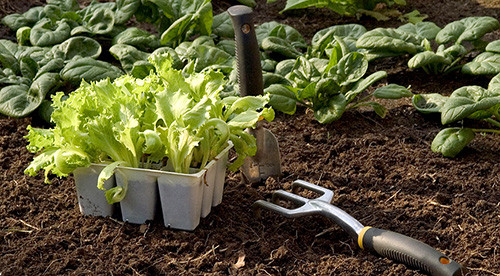
- July - the sowing calendar for July recommends closely monitoring the condition of plants, it is plentiful to water them and make organic and mineral fertilizers, because there are active ripening of fruits, and all life resources are required. In July, it is possible to re-plant greens and some vegetables, and in the last numbers there are perennials: sorrel, onions, rhubarb. In the first half of the month, perform the workpiece of strawberries for future landings. Put the backups under the apple branches so that they do not crumble under the severity of the fruit. Also do not forget to actively fight pests.
- August is the time of tasty vegetable salads from homemade cucumbers, tomatoes and cabbage. To speed up the ripening of tomatoes, make piping and steaming. Cultures that grew in a greenhouse should be reached on fresh air and lay fresh seedlings, on the autumn-winter period. This is the harvest time and preparation for storage.
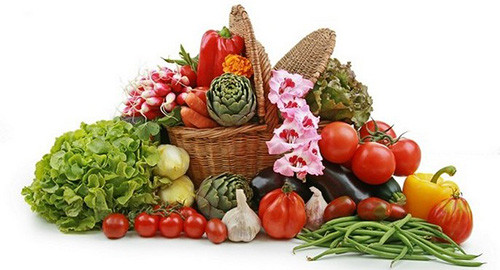
- September - this month in the sowing calendar of the flower and garden is summarized by the entire work done. Dry favorable days for harvesting is becoming less and less, so you need to use any opportunity. Fruit cultures this month require mineral feeding, as they have a repeated period of root growth. Potatoes 7-10 days before harvesting should be cut off the tops so that the tubers are faster than having come. In the second half of the month, winter garlic can be planted.
- October - At this time, the soil should be prepared by the next year, and it is necessary to do it before the first frosts. Make lime, manure, phosphoric fertilizers. It is not necessary to postpone this work until spring, since the acidic soil does not affect some cultures, and phosphoric fertilizers need a lot of time to dissolve and reach roots. In October, you can collect a crop from the late varieties of apple trees. In the second half of the month, make winter slopes of frost-resistant plants (carrots, sorrel, parsley) and new trees.
- November - by this time with all concerns in the garden you need to end. It is possible to promulate the beds with perennial vegetables and frost-resistant cultures. Bring the plot in order by collecting the foliage into a heap or using it to prepare warm beds. Young fruit trees protect from Zaitsev and Rodents, wrapped around their rubberoid.
Finally, we suggest looking at the sowing calendar in the table.

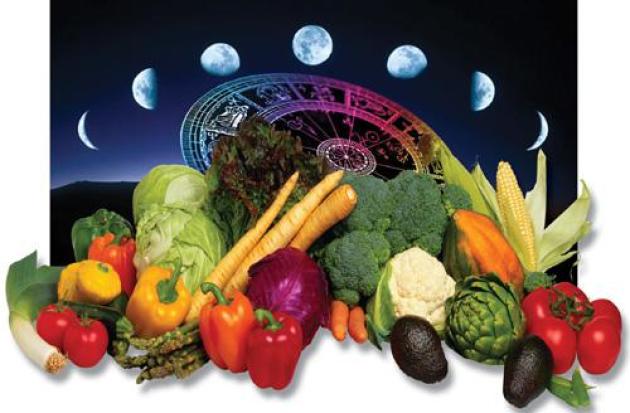
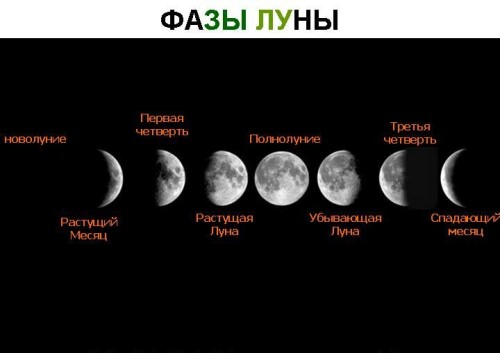
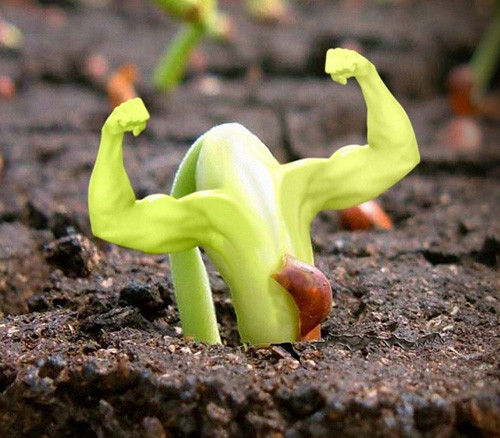
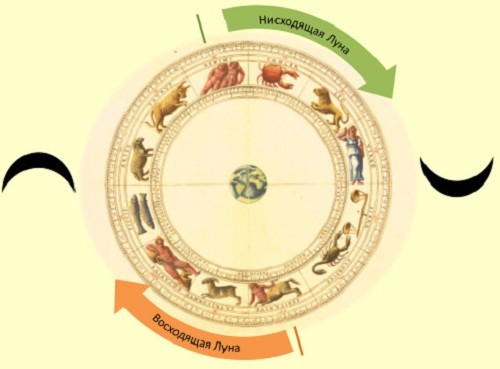

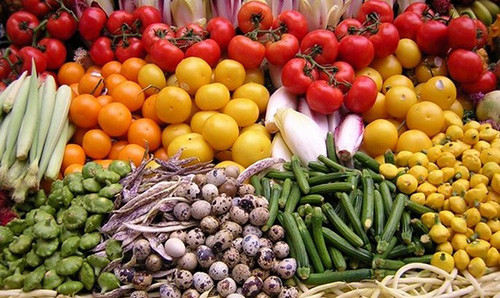
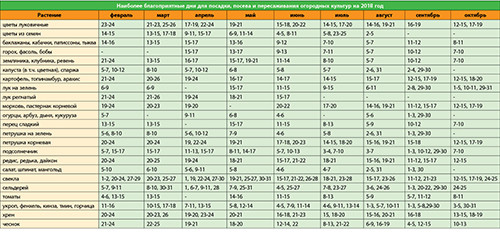












 Start a discussion ...
Start a discussion ...